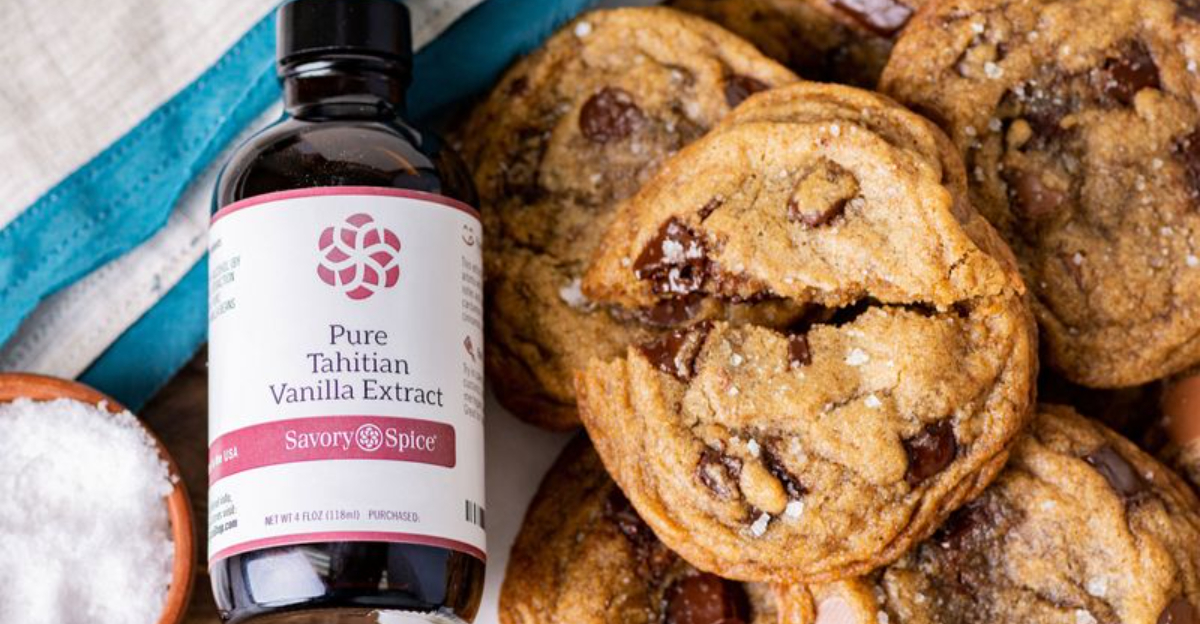15 Best Baking Tips That Will Make Your Food Incredible Every Time

Baking can sometimes feel like a mysterious, unpredictable art, where success seems to rely more on luck than skill. I’ve definitely had my share of baking disasters over the years, from flat, lifeless cookies to beautifully risen cakes that sank minutes after leaving the oven.
But through many flour-dusted afternoons and trial-and-error experiments, I’ve learned that the key to consistently amazing results lies in mastering a few essential techniques.
Once I understood the “why” behind the steps, everything changed. These game-changing tips have taken my baking from hit-or-miss to reliably spectacular, and they’ll help you feel more confident every time you preheat the oven.
1. Weigh Your Ingredients
My baking transformed the day I bought a kitchen scale! Measuring cups can be wildly inconsistent, I once used three different cup measures and got three different amounts of flour. Yikes! Professional bakers rely on weight because it’s precise and repeatable.
One cup of flour can vary between 120-150g depending on how you scoop it, while scales give you the exact same amount every time.
For everyday recipes, I still use cups for liquids, but weighing dry ingredients like flour, sugar, and cocoa powder guarantees consistent results. Trust me, this $15 investment will revolutionize your baking game!
2. Room Temperature Ingredients Matter
Cold ingredients straight from the fridge? Big mistake! I learned this the hard way when my butter wouldn’t cream properly and left weird chunks throughout my cake batter.
Room temperature eggs, butter, and dairy incorporate more air when mixed, creating lighter, fluffier textures.
The science is simple: warmer fats trap air bubbles better, which means superior rise and texture. My pro tip: set everything out about an hour before baking. In a rush? Place eggs in warm water for 10 minutes and cut butter into small pieces to speed things up. Your cakes will thank you!
3. Preheat Your Oven Properly
Confession time: I used to put my cake in while the oven was still preheating. The results? Unpredictable at best, disastrous at worst! Your oven needs that preheating time to reach a stable temperature throughout.
When I started giving my oven a full 20 minutes to preheat, my cookies began browning evenly and my cakes rose beautifully.
Most recipes assume your oven is already at the correct temperature when baking time begins. Skip this step and you’ll extend cooking times, mess with rising agents, and potentially end up with unevenly baked goods. Patience here pays delicious dividends!
4. Get To Know Your Oven’s Personality
My oven is like that friend who always runs late, it consistently reads 25 degrees hotter than the setting! Without my oven thermometer, I’d be burning everything. Every oven has quirks, hot spots, temperature inaccuracies, and heating patterns.
Map your oven’s hot spots by spreading bread slices across a baking sheet and watching which ones toast faster.
Rotating your pans halfway through baking compensates for these inconsistencies. And remember, glass and dark metal pans absorb more heat than light-colored aluminum ones. Once you understand your oven’s temperament, you’ll stop blaming recipes and start getting consistent results!
5. Splurge on Quality Ingredients
The vanilla extract revelation hit me hard! After years of using the cheap imitation stuff, I splurged on real Madagascar vanilla. The difference in my chocolate chip cookies was mind-blowing, suddenly they had this complex, aromatic quality I’d never achieved before.
Quality ingredients aren’t just food snobbery, they genuinely impact flavor. European-style butter contains more butterfat than regular butter, creating richer pastries.
Fresh spices pack more punch than the dusty ones hiding in your cabinet for years. Start with upgrading just one ingredient at a time. The pure vanilla extract, high-quality chocolate, or fresh nuts will make your baked goods sing!
6. Sift Dry Ingredients For Lighter Texture
Remember that cake recipe that said to sift the flour and I thought, “Nah, that’s just extra work”? The resulting dense, lumpy cake taught me a valuable lesson! Sifting isn’t just baking tradition, it serves multiple purposes.
It aerates flour that’s been sitting compacted in bags, removes any unwanted lumps, and helps distribute leavening agents and spices evenly throughout.
No fancy equipment needed! A simple fine-mesh strainer works perfectly. Hold it over your bowl and gently tap the side as your ingredients cascade through. This five-second step prevents flour pockets in your muffins and creates noticeably lighter cakes and pastries.
7. Mix Just Until Combined
Overmixing is the silent destroyer of baked goods! I once beat my muffin batter until perfectly smooth, thinking I was being thorough. Those muffins came out with tough, rubbery tunnels running throughout.
Flour contains proteins that form gluten when mixed with liquid and agitated. Some gluten development gives structure, but too much creates tough textures. For tender cakes and muffins, mix just until you no longer see dry ingredients.
My favorite technique: fold gently with a rubber spatula rather than beating with a mixer. Stop when you still see a few streaks of flour, they’ll incorporate during the final stir when adding mix-ins. Your muffins will thank you with tender, delicate crumbs!
8. Refrigerate Cookie Dough Before Baking
Patience pays off spectacularly with cookie dough! I accidentally left chocolate chip cookie dough in the fridge overnight once, and those cookies turned out better than any I’d ever made. Chilling does magical things: it solidifies the butter so cookies spread less during baking, creating thicker, chewier treats.
Even more importantly, it gives time for flavors to develop and meld together. The flour absorbs moisture, sugars dissolve, and everything intensifies.
Try this experiment: bake half your batch immediately and chill the rest for 24 hours. The difference in flavor and texture will convert you forever! Even 30 minutes helps, but longer chilling creates cookie perfection.
9. Rotate Pans Halfway Through Baking
The half-burnt, half-undercooked disaster of my first attempt at macarons taught me this crucial lesson! Even in fancy ovens, heat distribution is rarely perfect. Rotating your pans 180 degrees halfway through baking ensures even exposure to your oven’s hot and cool spots.
For multiple pans, switch their positions too, move the top rack to bottom and vice versa. Just be quick about it!
Every second the door stays open drops your oven temperature. And never rotate delicate items like soufflés or angel food cakes that might collapse with the disturbance. For everything else, this simple habit eliminates the frustration of cookies that are burnt on one side and pale on the other.
10. Line Pans With Parchment Paper
Parchment paper changed my baking life! I’ll never forget the heartbreak of watching half my birthday cake remain stuck to the pan despite generous greasing. Beyond preventing sticking, parchment creates a barrier between metal pans and your delicate batters.
This means more even heat distribution and no more over-browned bottoms on your cookies. For cakes, I cut parchment circles for the bottom and grease just the sides.
The cleanup benefit alone justifies using it, simply lift everything off the sheet when done! Bonus tip: crumple parchment before lining cake pans to help it fit better. This simple step eliminates the stress of wondering if your creation will release intact.
11. Use A Digital Thermometer For Perfect Doneness
The toothpick test failed me spectacularly when my “done” bread turned out gummy inside! A digital thermometer has since saved countless bakes from disaster. Different baked goods have ideal internal temperatures.
Enriched breads should reach 190°F, while lean crusty breads need 200-210°F. Even cakes benefit from temperature testing, most are perfectly done at 205-210°F. Temperature doesn’t lie, unlike subjective tests like tapping bottoms or checking color.
My instant-read digital thermometer takes the guesswork out of baking. No more cutting into bread too early or overbaking cakes until dry! For consistently perfect results, this tool is absolutely indispensable.
12. Match Your Pan Size Exactly
Pan size substitutions have led to some of my most spectacular baking failures! That time I used a 9-inch pan for an 8-inch cake recipe resulted in a sad, thin disc instead of a towering beauty. Recipes specify pan sizes for good reason.
Larger pans spread batters thinner, reducing baking times and changing textures. Smaller pans make deeper batters that need longer baking, risking burnt edges before centers cook through. If substituting is unavoidable, adjust filling levels rather than baking times.
Fill cake pans only 2/3 full and use any extra batter for cupcakes. Investing in standard pan sizes (8″ and 9″ rounds, 9×13″ rectangle) will eliminate most sizing headaches.
13. Add A Pinch Of Salt To Sweet Recipes
Salt in cookies and cakes? Absolutely! My chocolate cake recipe accidentally got a double dose of salt once, and everyone raved about how much more chocolatey it tasted. Salt isn’t about making things salty – it’s a flavor enhancer that reduces bitterness and amplifies sweetness.
Just a pinch counteracts the one-dimensional sweetness in desserts and creates more complex, satisfying flavors.
Even if a recipe doesn’t call for it, I add about 1/4 teaspoon of salt to most sweet batters. Try this with chocolate recipes especially, the salt makes the chocolate flavor pop dramatically! For an extra flavor dimension, sprinkle flaky sea salt on chocolate chip cookies right after baking.
14. Clean As You Bake
My kitchen used to look like a flour bomb exploded by the time my cookies were done! Now I fill the sink with soapy water before I even start measuring ingredients. Used measuring cups and spoons go straight into the water while ingredients mix or dough chills.
Those 5-minute gaps when something’s in the oven? Perfect for washing a mixing bowl or wiping down counters.
Beyond making cleanup less daunting, this habit prevents cross-contamination and gives you space to work efficiently. It also stops measuring errors, I once added double sugar because I couldn’t remember which cup I’d already used in my cluttered workspace! Tidy space, tidy mind, better baking.
15. Let It Cool Completely
Impatience has ruined more of my cakes than any baking error! That gorgeous chocolate layer cake I tried to frost while warm turned into a landslide of icing and crumbs. Cooling serves crucial purposes beyond preventing burns.
Hot baked goods are still cooking from residual heat and setting their structure. Cutting into bread too soon releases steam that makes it gummy. Frosting warm cakes creates melty disasters. Use cooling racks to speed the process, they allow air circulation underneath.
Most cakes need at least 2 hours, while bread benefits from at least 30 minutes rest. The hardest baking skill isn’t technique, it’s patience! Trust me, waiting delivers dramatically better results.
